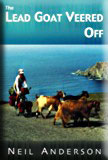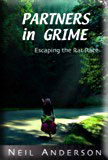|
July 4 Tuesday sunny breaks muggy 22º C Bicycle touring Ireland At Wellington Bridge, Ireland, we buy groceries with the £5 note the Eilene gave me to buy Guinness with. I bought milk. Sorry about that, Eilene. I'm still practicing for my Guinness. None of the Irish villages we have passed through on our bicycles have banks. A clerk at a store tells us there used to be a mobile bank that came to Wellington Bridge, but it stopped coming as it wasn't profitable. And we all know how banks are into profits. I suppose that most people have cars nowadays anyway, so they can just drive to the city whenever they need a bank. We pull our touring bicycles to a stop and we eat at picnic tables in front of a semi-circular dugout canal. It is windy. In the two hours we are there -- I don't know how I used to manage with only an hour lunch break -- we see seven loaded touring cyclists cruise by. Bicycle touring in Ireland is the most popular European country we have seen so far. As we pack up our panniers and are ready to leave, we meet three touring Australians- Pat and Bill Wallace ("call me Wall") and their daughter who has just met them in Dublin. They are on a four-month cycling trip and have already used up three months. Pat and Bill spent most of their time cycling in Greece and a bit of time cycle touring in Turkey. They were going to do some bicycle tours in some European eastern block countries and France, but they said that obtaining visas were too much trouble, so they flew with their bikes from Athens to London instead. Sharon and I wished them well, then hopped on our touring bicycles and cycled R733 to a turnoff for Tintern Abbey. There were three Gypsy caravans along the abbey road, but they were in sad shape compared to the impeccable brightly painted Gypsy caravans we had come across outside Cambridge, England. A woman at the Tintern Abbey info hut gave us a historical overview of the abbey and surrounding Irish area. She says it was a Cistercian abbey (Cistercians are monks or nuns from an order founded in 1098 as a stricter branch offshoot from the Benedictines. The monks are divided into two observances, a strict observance -- whose adherents are widely known as Trappists; and a so-called common observance, which is not nearly as strict). The infor woman tells us that this area of Ireland was greatly influenced by the Normans who landed in 1170. I notice that they look at years differently in Ireland. Route R733 that Sharon and I were cycling was put in 200 years ago in order to send troops to the coast for a presumed invasion - that road is referred to as "the new line." We ask her where the nearest bank is, as we are out of money. She tells us it is quite a ride from here, but suggests that if we just go into any pub and yell out, "Does anyone want to exchange some Irish pounds for English ones?" someone probably will. She has seven kids -- must be a Catholic Irish. Her kids range in age from 8 to 30 years old. Filled with local -- and family -- history, Sharon and I went to wander around the Tintern Abbey grounds. There are wonderful woods that surround the area. There is a stream that runs alongside the abbey. As Sharon looked over the bridge she saw a large rat taking a drink. Classic. That is exactly what I think of when I see these old abbeys. We stopped back in at the info hut to say thanks on our way out. The info woman asked me, "Do you have an English tenner?" I said, "I think so." Sharon later told me she wondered what on earth we were talking about. "Tenor?" she thought. "What does he mean 'I think so'? He can barely hum a few bars, let alone sing tenor." She said it wasn't until I dug out a £10 English banknote that she caught on. The info woman gave me an Irish £5 note and 5 £1 Bank of Ireland coins in return. I didn't even have to pay commission. We cycled around the Ring of Hook and the pedalled on to Hook Head where Europe's oldest lighthouse is situated. A light has been maintained on the Hook Head site continuously for over 1500 years. The roads we are cycling are extremely bumpy. One time when I pulled my touring bicycle to a stop, the sky looked like the clouds were converging together in fast forward. My optic nerves must have still been jiggling. We watched the sun set over a field while eating stew at a dead end gravel road by the sea. We can see Slade Castle, Hook Lighthouse, and the ruin of a fort from where we are sitting on the bank. We set our Kelty bicycle touring tent up on the edge of a farmer's cut grass field amid a horde of buzzing insects. Irish flies are smiling. |





